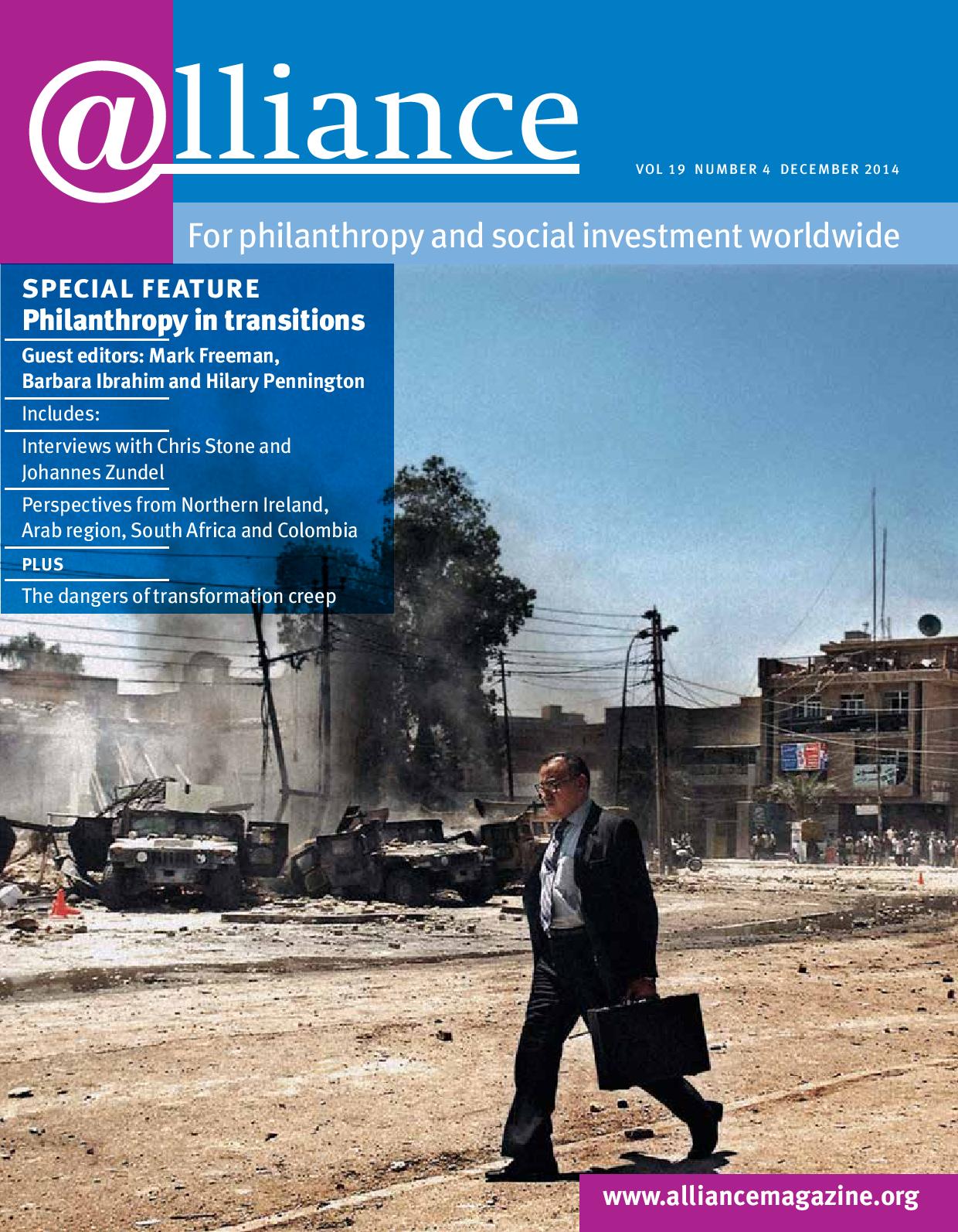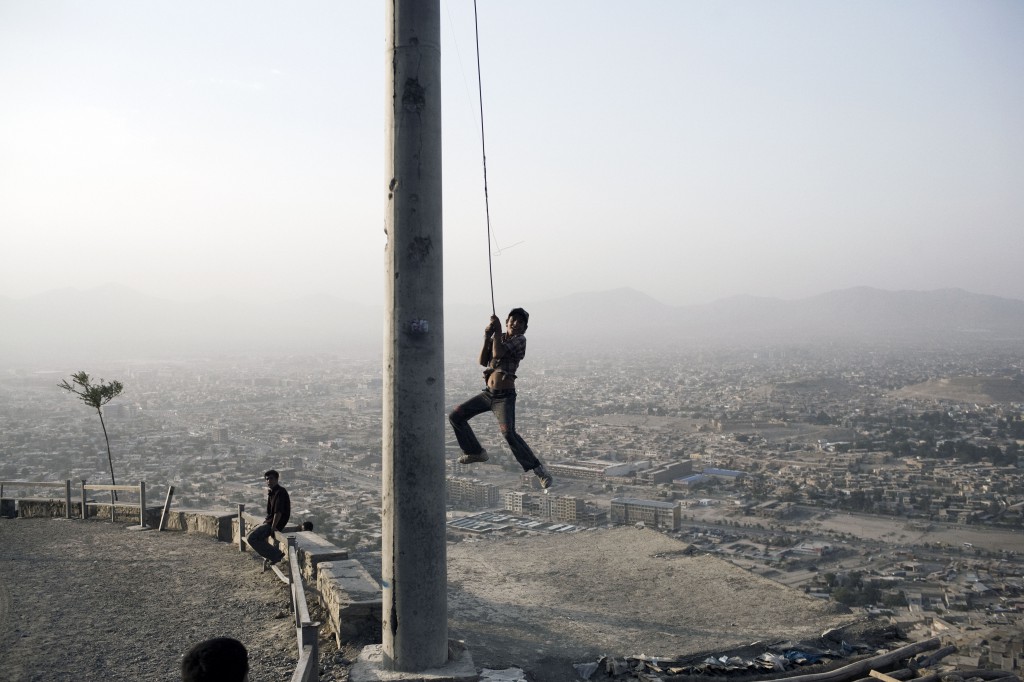Few professional sectors are better suited to support transitions than private philanthropy. Bilateral and multilateral aid agencies often operate on fixed, multi-year budget cycles and may require legally complex consultations with public officials or parliaments to take decisions. Compared to governments and other publicly accountable bodies, philanthropy has greater independence and flexibility with its funds, and thus a greater inherent capacity to take risks, to be bold and creative – yet it frequently refrains from using these advantages.
The simpler accountability structures give foundations greater capacity to swiftly recalibrate programmes and policies or to find new partners and projects when unexpected changes occur. This gives private philanthropy greater leeway to support remarkable people and processes when transitions arise – provided they have the will and the skill.
Without underestimating current global challenges, or the hard but important lessons from recent transitions in the Arab region and elsewhere, today’s reflective mood in the philanthropic community is producing many new ideas worth considering. We have distilled a few of these for future consideration, drawing in part from the contributions to this special feature.
A different kind of affinity group
Few private donors have an explicit department or programme category dealing with ‘transitions’. Moreover, concepts and terms long used in the transitions literature – like ‘fragile states’, ‘state-building’, ‘democratization’ and ‘peacebuilding’ – rarely feature in philanthropic discourse. The same might be said of the community of transition experts beyond philanthropy’s walls: they are unlikely to utilize programming concepts familiar in philanthropy around ‘scoping comparative advantage’, ‘ethical exit strategies’ or ‘leveraging impact’.
It was thus that the idea for a global transitions affinity group emerged from several conversations over the past year. Integrating professionals from both fields – philanthropy and the broader community of transition experts and advisers – would make for an interesting experiment. It could help to overcome today’s ad hoc engagement between these communities, and produce a structured, continuous interaction that could have real impact as transitions evolve.
A transitions network or affinity group could be initiated through existing thematic and regional philanthropic networks. Alternatively, it might become a stand-alone initiative. In either case, it would provide a platform for information exchange and analysis, and for discussion of potential collaborations as transitional opportunities arise. Private donors with substantial field presence and strong track records in transitions could lead the affinity group and promote joint assessments of the field’s successes and failures. In addition, the group could provide a forum for ‘day-after’ advance planning for countries that appear on the verge of emerging from a period of conflict or authoritarian rule.
Political-economic assessment
Country-level analytic tools, including institutional mapping, conflict assessments and power analyses, have come a long way. They are no longer ‘back of the envelope’ exercises. By using the best available analytic tools, foundations and social investors can base their programmes on more realistic expectations and ensure tailored responses to periods of political, economic and social change. These tools are in wide use by foreign ministries and global consulting firms and could – and should – be adapted to the needs of philanthropists. Additionally, private donors can improve their transition assessments by engaging with a number of active foundation networks in the peacebuilding and human rights fields, which offer expertise and peer learning opportunities that are of direct relevance to transitions, as described by Jo Andrews.
Stand-by policies and funds
To avoid delayed or ad hoc responses to transition opportunities, grantmaking foundations and corporate donors could consider establishing a transition response policy (TRP) that would serve as an overarching ‘rules and practice guide’ for future engagements in transitions. A thorough TRP could provide advice to staff on how to swiftly assess context, and incorporate due diligence requirements with an eye to allowing for some risk-taking and exploratory grantmaking.
The TRP’s natural counterpart would be a transitions contingency fund (TCF), a tool to increase preparedness that could be built up over time and reserved for unanticipated openings. It could, for example, be geared towards small grants, allowing foundations to test concepts and new partnerships while taking the time to vet grantee organizations being considered for larger grants. The fund might be stand-alone or linked to a donor’s reserves, and fed by an annual infusion of sources determined by the trustees. Decision-making over the use of the TCF could be devolved to senior staff and their advisers in the field. Similar transition-specific funds already exist within the UN system, the World Bank and some bilateral aid agencies.
Prioritizing dialogue
Private philanthropy, with its independence and flexibility, is well placed to help bring together divided or dispersed actors in order to foster inclusive social and political outcomes. Well-timed dialogues, as occurred with philanthropic support in places like South Africa and Northern Ireland, can have a profound impact, as the formal and informal agreements they help generate are often the cornerstones of successful transitions.
This type of process-oriented programming is a natural fit for the philanthropy sector, which is often viewed as more impartial than foreign governments. It also fits with a broad understanding of what transitions ultimately offer: learning processes in which conflict stakeholders come to interpret and act upon their own roles and experiences from new vantage points. More so than at present, transition grantmaking can encourage these structured processes for the reconfiguring of relationships and the opening up of participation and dialogue spaces across society’s key political, social and economic fault lines.
The implementation of even a few of these simple ideas bubbling up from the field could make an enormous difference. It could help donors to limit risks and maximize the chances of achieving significant positive outcomes when countries emerge from repressive regimes or the horrors of armed conflict.
Catalytic short-term strategies
Private donors from abroad that plan to stay for a relatively short period may consider focusing their support along the lines of the UN’s Quick Impact Projects (QIPs). QIPs are low-cost, small projects that aim to build confidence in early stages of peacebuilding, and are fitting for the fast pace of change in a transition. Shorter-stay international donors may also want to prioritize the establishment of partnerships with local donors who, by nature, are able to stay engaged longer. Supporting the creation of a local philanthropic infrastructure – as was done in Central and Eastern Europe and the Balkans – can be an equally smart choice for the early years of a transition. It can help mitigate the unsustainable dependence on international aid that too often results from poorly planned transition grantmaking.
Enhancing the ways philanthropists conceive and structure their engagement in transitions is bound to be an ongoing and evolutionary process. Yet the implementation of even a few of these simple ideas bubbling up from the field could make an enormous difference. It could help donors to limit risks and maximize the chances of achieving significant positive outcomes when countries emerge from repressive regimes or the horrors of armed conflict.
Mark Freeman, Barbara Ibrahim and Hilary Pennington are the guest editors for the Alliance special feature on ‘Philanthropy in transitions’







Comments (0)